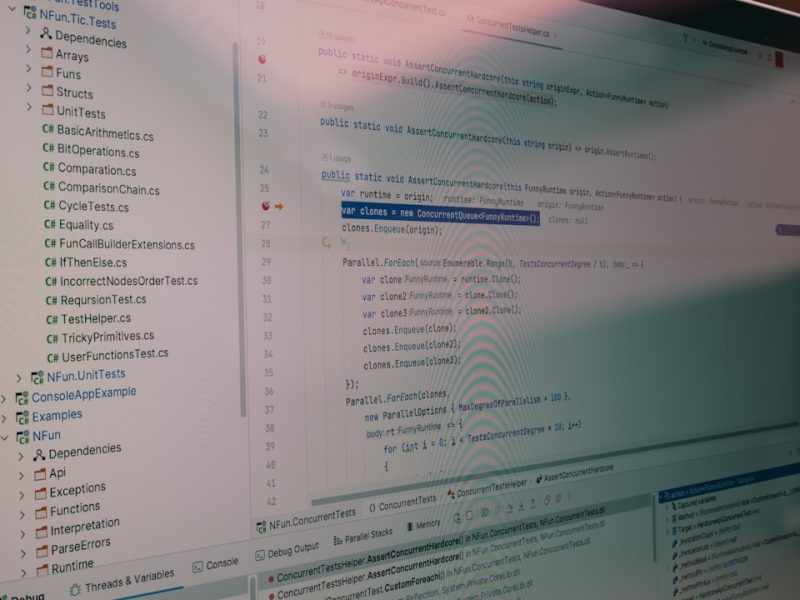
The Clever Hack to Get Featured Snippets From Google My Business Listings
For local businesses, ranking on Google is no longer just about websites. With the rise of local intent searches, Google My Business (GMB) listings have grown more significant, often appearing ahead of traditional web links. But here’s where the magic happens: GMB content can actually power featured snippets—those high-profile answer boxes at the top of Google search results. The key is knowing how to structure your GMB listing strategically to earn those coveted spots. Read more
How Publishers Fixed Broken CMP Integrations in Quantcast Choice After a CMP Update Blocked Ads Entirely
In early 2024, digital publishers faced a significant revenue disruption when a widespread update to the Quantcast Choice CMP (Consent Management Platform) led to ads being blocked completely on affected websites. The issue stemmed from misconfigured or outdated integrations, and the impact was immediate and dramatic — ad impressions and revenues plummeted while users experienced error-prone or ad-free pages. Yet, within days, publishers and ad tech teams managed to diagnose the problem and roll out critical fixes. This article explores how publishers navigated the crisis, provides insight into the root causes, and outlines the steps taken to restore consent flows and ad delivery. Read more

The Solution Users Found When Their Entire Amazon Order History Suddenly Disappeared
In early 2024, Amazon users across the globe encountered an unexpected and unsettling issue: their entire order history vanished without a trace. For many, this wasn’t just an inconvenience—it created anxiety about missing package tracking, warranty claims, and tax documentation. Frequent Amazon customers who rely heavily on past order data for both personal and professional reasons were left searching for a solution. As speculation grew, users turned to forums, contacted customer service, and even devised technical workarounds to recover lost data. Read more

How People Fixed Amazon Music Tracks That Skip, Refuse to Play, or Appear Twice in Playlists
For music lovers thoroughly invested in the Amazon Music ecosystem, there’s nothing more frustrating than hitting play only for a track to skip unexpectedly, freeze mid-beat, or—oddly enough—appear multiple times in the same playlist. These issues have bugged users across all platforms, from smartphones to smart speakers, leaving many to question whether their playlists would ever be smooth again. Read more

How Cloud Sync duplicated files across remotes and broke versioning and the conflict-resolution rules I implemented to reconcile copies
Cloud synchronization tools are widely celebrated for their convenience, enabling seamless access to files across devices and platforms. Used correctly, they simplify our digital lives and enhance collaboration. However, when multiple systems are involved—different remotes, automated scripts, and version-controlled environments—things can go sideways. My custom conflict-resolution rules and versioning logic were once robust enough to enable distributed workflows, until cloud sync workflows intervened in unpredictable and destructive ways. Read more
Why the Amazon App Keeps Showing Inaccurate Delivery Estimates and How Users Corrected It
The Amazon app is super popular. Millions of people use it every day to order everything from socks to smartphones. But lately, many users have noticed something weird — the delivery dates it shows are often wrong. Sometimes it’s too early, other times too late. So what’s going on? Read more

Spotify Desktop App Crashing on Startup After Update and the Hardware Acceleration Fix
We’ve all been there—excited to fire up Spotify to kick off our workday, gym session, or relaxation time, only to be met with frustration when the desktop app crashes the moment it tries to launch. You’re not alone. Recently, following a round of updates, a growing number of Spotify desktop users have reported that their app doesn’t even make it past the splash screen. Fortunately, there is a practical and surprisingly simple solution that many have found effective: turning off Hardware Acceleration. Read more

Mac Name in Automate Not Updating? Here’s How to Fix It
Keeping your Mac fleet properly labeled and identified is critical when using ConnectWise Automate (formerly LabTech). A frequent issue systems administrators face is when a Mac name doesn’t update correctly in the Automate Control Center—even after the name has been changed directly on the local machine. This discrepancy can lead to confusion, mismanagement, or even failed scripts and automation. Fortunately, there are reliable steps to correct this issue and keep your Automate agent accurately reflecting your Mac environment. Read more

What Does “Contacts” Mean on Zillow? Explained
If you’ve ever browsed homes on Zillow, you may have come across the term “Contacts” and wondered, what does that even mean? Is it your phone contacts? A message center? Or maybe just people you’ve talked to about a house? Fear not — we’re breaking it down for you in this simple and fun guide! Read more

What Does “Accepting Backups” Mean on Zillow?
In the competitive world of real estate, home statuses on listing platforms like Zillow can be a source of confusion for both buyers and sellers. One of the most often misunderstood statuses is “Accepting Backups.” When browsing available homes, this label may catch the eye of prospective buyers, but what does it really mean? Understanding this term is essential for making informed decisions, whether you’re in the market to buy or sell. Read more